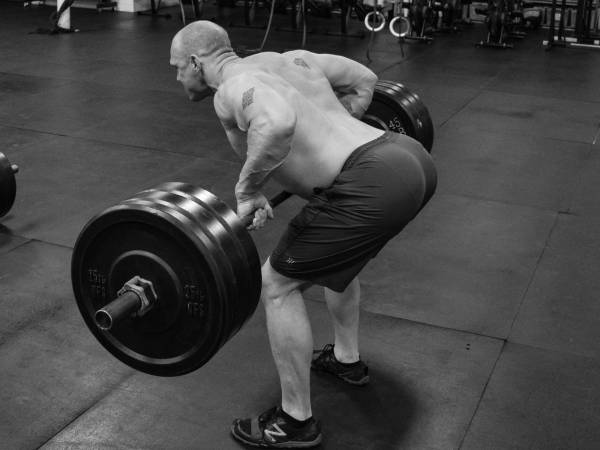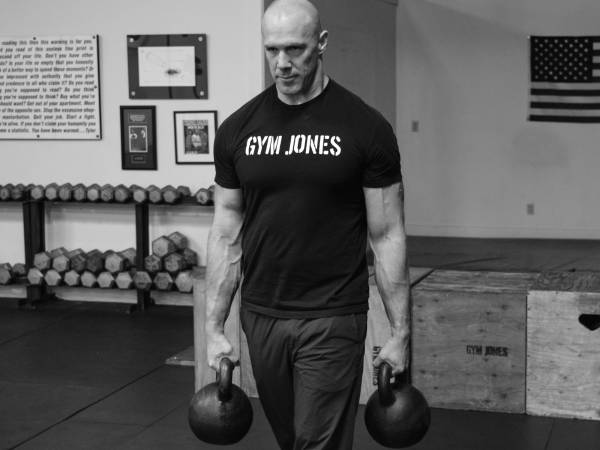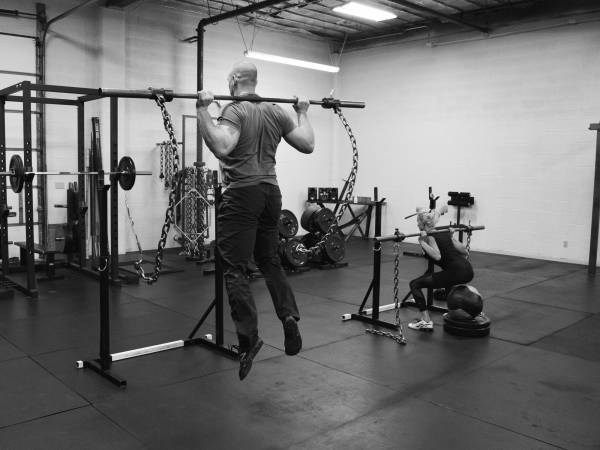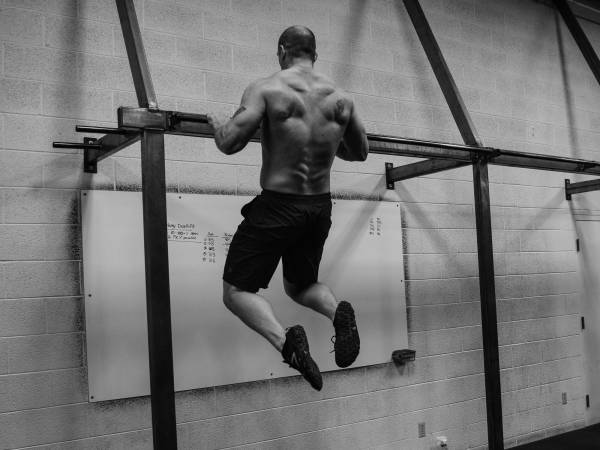Yes, training for aesthetic purposes is important. Anyone who says he or she isn’t interested in looking good is a liar. That said, building real, genuine horsepower is far more important. You don’t want to be the person who is described as “all show and no go.”
I’ve always been interested in being big and strong, but I’ve never been interested in gaining size and strength at the expense of being athletic. What is the use of being big and strong if you can’t use it? It’s nice to weigh 250 pounds, but if you can’t run, or jump, or tumble, then what’s the point?
In my opinion too many people lose functionality when they put on size. They lose mobility, they become slow, their joints hurt, and they sacrifice all cardiovascular conditioning. The goal of Functional Mass Gain is to put on size, but also get stronger, stay agile, stay fast, stay flexible, and maintain mobility.
“You don’t want to be the person who is described as ‘all show and no go.'”
In other words the goal is to build some real actual horsepower. We want to build muscles we can actually use – not just muscles for show.
Horsepower Is Important: The Program
The human body is meant to move as one piece. Ditch the standard bodybuilding protocol. Machines and isolation exercises aren’t welcome here.
You’re going to want to include big, compound movements in your programming. Use squats, deadlifts, lunges, jump squats, sled work, and power cleans to develop lower-body strength and explosiveness. For upper-body work, use the bench press, horizontal row, pull up, bent row, push up, dips, and the standing strict press. There’s nothing fancy here. Just old-fashioned hard work.
For building strength, I prefer using the 4×4 format using 80% of 1RM. You can do this with the back squat, deadlift, bench press, strict press, and the lunge. For building strength endurance and size, my favorite format is 10×10 (ten sets of ten) at 50-60% 1RM.
“Use plank holds and the overhead squat to strengthen your core. Nothing sorts our your core like holding a big weight above your head.”
Also include plenty of jumping and sprinting. You want to stay fast and agile. When it comes to developing real-world athleticism, there is nothing better than sprinting and jumping. They are the most natural of human movements and transferable to almost any sport or activity. As a good friend of mine used to say, “If you ain’t running, you ain’t running.”
Do plenty of single-leg work to ensure you don’t develop any imbalances. Do plenty of shoulder mobility work to keep your shoulders in good shape and to offset the bench press work you will be doing. You’ll also want to do a lot of supportive work like straight leg deadlifts, Romanian deadlifts, and grip work. Supportive strength movements will help your max lifts and your ability to tolerate more weight and reps during your hypertrophy work.
Finally, make sure you address mobility and that you include plenty of supplemental work to round out your program. Remember the goal here isn’t just to put on size. You want to build a body you can use. Use plank holds and the overhead squat to strengthen your core. Nothing sorts our your core like holding a big weight above your head.
Recovery Is the Key
When you train hard, there will be wear and tear on your body. Anyone involved in a rigorous training program needs to address recovery properly. You can’t race your car every day and never give it a tune-up. The engine and the body will fall apart. You need to align, balance, rebuild, and rest.
“People are always looking for the secret, some pill, or some supplement that will help them. Nothing is more anabolic than a few hours of extra sleep a night.”
The better recovered you are, the harder you can train on a day-to-day basis, which makes the program effective. Also, staying injury free is an essential part of any program. Use massaged, chiropractic, and the foam roller to keep your body aligned and working properly. Use ice baths to deal with soreness. There will be a lot of soreness and you want to deal with it by any means necessary.

Above all else, get plenty of sleep. The more sleep you get, the more human growth hormone and testosterone you will have, the better you will recover, and the harder you can train. The bed is where you recharge your batteries. Make sure you are running on a full tank. People are always looking for the secret, some pill, or some supplement that will help them. Nothing is more anabolic than a few hours of extra sleep a night.
You Have to Eat to Grow, But Eat Sensibly
You need to eat to grow. You can do all the work you want in the gym, but if you don’t eat properly, you won’t be able to handle the training volume and you won’t put on any size. You must be as dedicated to diet as you are your training.
Training just isn’t work in the gym. It is also recovery work and nutrition. Nutrition may be more than 50% of the process here. So eat, eat, eat. If you aren’t eating as you are reading this, you aren’t that serious about putting on size.
That said, one of my pet peeves is people using “mass gain” as an excuse to eat junk food. You don’t want to put on all kinds of fat and garbage weight that you will have to lose later on. Some people may need to consume some fast food and ice cream to get enough calories, but others may get fat from such choices.
“Everyone wants to be big and strong, everyone wants to put on muscle, everyone wants to eat the food – but they don’t want to do the work.”
All dietary choices must be individualized. Know what your basal metabolic rate is. Know how many calories you need to maintain your weight and to add muscle without putting on unwanted extra weight. Try to make good food choices more often than not and make sure you eat nutritionally dense food.
Another of my pet peeves is people doing the eating without the proper work. People want to eat whatever they want and to have fun, but do they really do the work that goes with it? Everyone wants to be big and strong, everyone wants to put on muscle, everyone wants to eat the food – but they don’t want to do the work.
Below, I’ve posted a sample week with the training volume necessary to improve. If you don’t want to commit to that, then you can’t just fill your face at the buffet. If you don’t want to do the work, you don’t get to play the game. Be responsible with your training direction and diet. Be realistic with what you’re willing to commit.

A Sample Week
Here is what a sample week should look like. There are two days devoted to upper-body work, two days devoted to lower-body work, two days of athletic work (sprinting and jumping), and one rest day. This isn’t an easy program. There is a lot of volume and a lot work. It is not meant for a beginner.
“If you jump into this program without the proper base, there will be a chance you’ll get injured. Know your limitations.”
A beginner shouldn’t be on a Functional Mass Gain program. A beginner would do better on a basic foundation program before jumping into something like this. This program is for a person who knows the movements, knows his or her abilities and max lifts, is devoted, and has developed a big work capacity. If you jump into this program without the proper base, there will be a chance you’ll get injured. Know your limitations.
Monday
Then:
Then:
Then:
Then:
Then:
Then:
Tuesday
Then:
Then:
Then:
Then:
Then:

Wednesday
Then:
Then:
Then:
8x100m Sprint
Rest 2 minutes between each
Then:
Then:
Thursday
Then:
Then:
Then:
Then:
Then:
Friday
Then:
Then:
Then:
Then:
Then:
Then:
Saturday
Then:
Then:
Then:
Then:
Then:
Sunday







